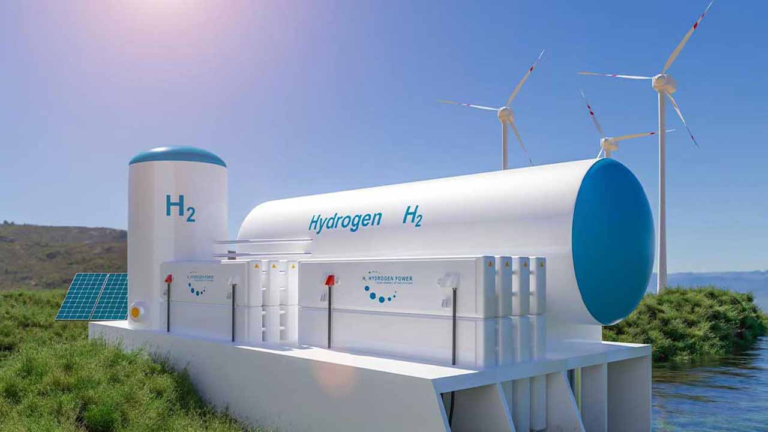Oman can be a competitive low-emission hydrogen supplier by 2030, says the latest IEA report.
IEA Executive Director Fatih Birol presented the new report titled ‘Renewable Hydrogen from Oman: A Producer Economy in Transition’, to Oman’s Minister of Energy and Minerals Salim Al Aufi during a round-table meeting with senior IEA leaders and analysts at the Agency’s headquarters in Paris.
The first IEA report of its kind that analyses renewable hydrogen potential in a fossil fuel producer country said that high-quality renewable energy resources and vast tracts of available land in Oman,favours the country in producing large quantities of low-emissions hydrogen.
The hydrogen sector, the reports says that is a booming industry today which can contribute in the rise of investments and increase the country’s export revenues,further reducing its natural gas consumption and emissions.
The latest analysis is being built on the IEA’s ongoing technical co-operation with Oman to support the country’s clean energy transition.
It should be noted that Oman aims to produce at least one million tons of renewable hydrogen a year by 2030, up to 3.75 million tonnes by 2040 .Further rising it up to 8.5 million tonnes by 2050, that would make it greater than total hydrogen demand in Europe today.
“Oman is an oil and gas producer country that is taking an enlightened approach to its energy future, with a clear long-term vision and strong net zero ambitions,” said Dr Birol. “Thanks to its huge potential for low-cost solar and wind, renewable hydrogen is set to bring multiple benefits to Oman. The IEA is very pleased to be working with Oman on policy and technical matters as the country moves ahead on its journey to a net zero economy and shows other producer countries what is possible.From an energy perspective, Oman is better known for being an oil and gas developer, however it is also blessed with globally competitive solar and wind energy resources, and the most economically rational action for us is to embark on using this as the most viable and sustainable energy of tomorrow, including decarbonising the power generation, local industry and hydrogen production for export,” said Minister Al Aufi.
In 2022, Oman announced a target to achieve net zero emissions by 2050 and began reducing fossil fuel use in its domestic energy mix. As per IEA report,Oman is on track to become the sixth largest exporter of hydrogen globally, and the largest in the Middle East, by 2030.
Oman’s hydrogen projects aim to use electrolysers powered by renewable electricity to extract hydrogen from desalinated sea water.
The country also has an edge when it comes to renewable sources for power as it can reap benefits from high-quality solar PV and onshore wind resources, as well as vast amounts of available land for large-scale projects. Its location along important market routes between Europe and Asia, with existing fossil fuel infrastructure can be used or repurposed for low-emissions fuels, says the report.
Moreover,Oman has expertise in handling and exporting both LNG and ammonia that is directly applicable to renewable hydrogen and hydrogen-based fuels.
Oman is implementing concrete measures to achieve its ambitious targets. In 2022, the government established an independent entity, Hydrogen Oman (HYDROM), to lead and manage its hydrogen strategy. So far, 1 500 square kilometres of land has been put aside for development by 2030. Six projects have already been allocated land for renewable hydrogen in the country’s first such auction process.
Recently, to this end, Hydrom signed three agreements to develop green hydrogen projects that would require an investment of $20 billion, with BP Oman, the Amnah consortium, and the Green Energy Oman alliance. The three contracts are expected to yield a total production capacity of 500,000 tonnes of green hydrogen per year for over 12 GW of installed renewable energy capacity.
As per IEA, Oman’s renewable hydrogen exports are likely to be transported initially in the form of ammonia. While Oman already exports around 200 000 tonnes of ammonia a year, however,its ammonia export capacity would need to be 20 to 30 times higher by 2030 for becoming a significant international hydrogen supplier in approaching years.
The report suggested that, If Oman wants to meet its 2030 hydrogen targets, it will require a massive increase of renewable power, with around 50 terawatt-hours of electricity which is greater than the current size of the country’s entire electricity system.
However, it is expected to benefit he nation with cost reductions and will benefit the country’s power system,too. Based on recently awarded bid prices in the region, utility solar PV and wind are likely already competitive with electricity generation from natural gas in Oman.
The IEA report says that Oman can cost-effectively achieve its targets of renewables reaching 20% of the country’s electricity mix by 2030 – and 39% by 2040.It is expected to require cumulative investment of around USD 33 billion to increase its production of renewable hydrogen to one million tonnes by 2030.
Further, the report estimates requirement of an additional USD 4 billion to bring renewables’ share of the national electricity mix to 20%.As the report points out, “ Achieving its targets and using one-third of renewable hydrogen for domestic uses would significantly contribute to Oman’s clean energy transition. The benefits would include reducing domestic use of natural gas by 3 billion cubic metres a year and avoiding 7 million tonnes of carbon dioxide emissions.”


